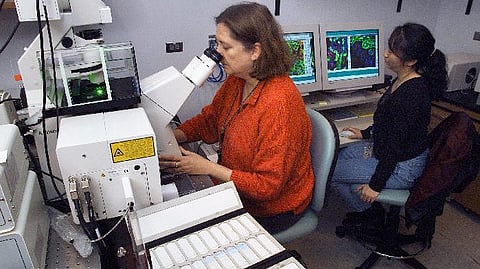The hepatitis B virus (HBV) is responsible for one of the most serious and common infectious diseases. Transmitted through biological fluids, it attacks the liver cells. The chronic form of the disease can lead to serious complications, including cirrhosis and liver cancer. There is no effective treatment for the chronic form of the disease, which can only be prevented by vaccination. After identifying a key protein complex that is active when our body is infected by the virus, a team from the University of Geneva (UNIGE) has deciphered the precise functioning of this protective mechanism, opening the way to new therapeutic targets. These results can be read in the journal Nature Structural and Molecular Biology.
Hepatitis B is the most common form of hepatitis. It is a viral disease caused by the hepatitis B virus. It is mainly blood or sexually transmitted. It is up to 100 times more contagious than HIV. By infecting the liver cells, this virus causes a transitory inflammation of this organ that can also evolve towards a chronic infection. This can then lead to serious pathologies, such as cirrhosis or liver cancer. It is estimated that nearly one million people die each year from this disease worldwide. There is no definitive treatment for chronic hepatitis B. The only way to prevent it is to be vaccinated before the disease appears.
In 2016, a UNIGE team led by Michel Strubin, an associate professor in the Department of Microbiology and Molecular Medicine and in the Geneva Centre for Inflammation Research at the UNIGE Faculty of Medicine, revealed a mechanism that is crucial for understanding this disease: when our immune system defends itself against it, a complex - i.e. an interdependent set - of six proteins called SMC5/6, present in our cells, detects the viral DNA and blocks it. The virus then strikes back and produces a specific protein, the X protein. This protein enters the cell and degrades SMC5/6, which is no longer able to play its sentinel role.


